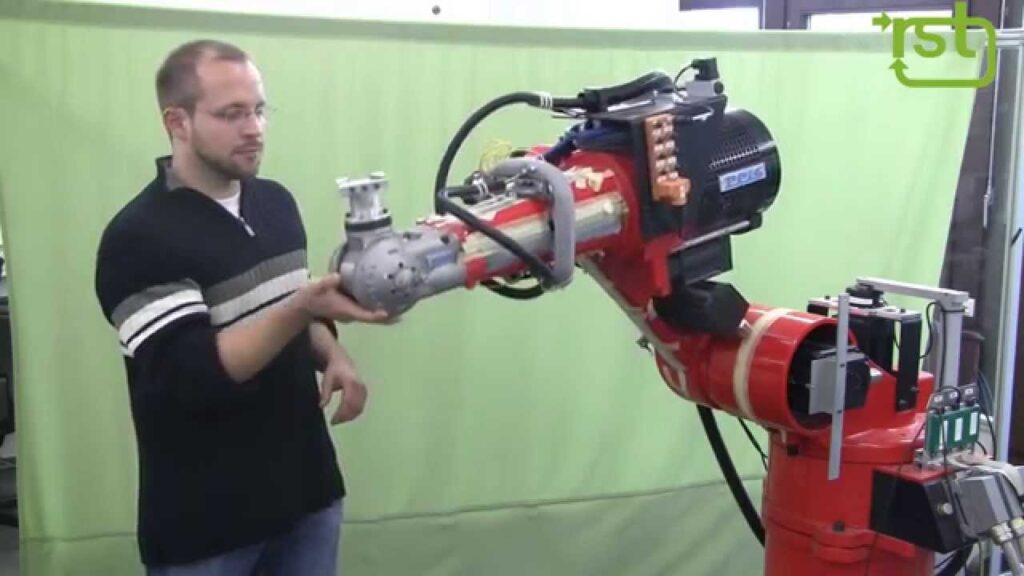# Exploiting Link Elasticity in a Conventional Industrial Robot Arm
Introduction:
Industrial robots have revolutionized the manufacturing industry by providing fast and precise manipulation of heavy payloads. These robots have become an integral part of production lines, increasing efficiency and productivity. However, as technology advances, there is always room for improvement. The optimization of conventional industrial robots, particularly in terms of exploiting link elasticity, opens up new possibilities for enhanced performance and flexibility in industrial settings.
## The Concept of Link Elasticity:
Link elasticity refers to the ability of an industrial robotic arm to adapt and absorb external forces or disturbances during operation. Conventional industrial robot arms are typically rigid, designed to carry out precise tasks with heavy payloads. However, this rigidity can sometimes lead to limitations in their performance. By incorporating link elasticity into the design of these arms, the robots gain the ability to mitigate the effects of external factors such as collisions, vibrations, and changing payloads.
## Enhancing Performance with Link Elasticity:
The integration of link elasticity in conventional industrial robot arms brings a range of benefits that positively impact performance and efficiency in industrial settings.
### 1. Increased Flexibility:
By introducing link elasticity, robotic arms gain increased flexibility in adapting to various tasks and environments. The ability to absorb external forces allows the arm to navigate obstacles and handle varying-sized payloads without compromising precision and safety. This flexibility eliminates the need for constant reprogramming or adjustments when faced with changing production requirements.
### 2. Enhanced Safety:
Safety is paramount in industrial settings, and the utilization of link elasticity contributes to enhancing worker safety. The ability of a robot arm to absorb or react to unexpected external forces ensures that collisions or accidents are minimized. This feature is particularly crucial when robots are working alongside human operators, reducing the risk of injury in collaborative tasks.
### 3. Improved Reliability:
Link elasticity also plays a significant role in improving the reliability of industrial robotic arms. The integration of sensors and control algorithms allows the robotic arm to detect and respond to disturbances promptly. This adaptability to external forces reduces the likelihood of mechanical failures or system malfunctions, resulting in smoother production processes and reduced downtime.
## The Future of Link Elasticity in Industrial Robotics:
The concept of exploiting link elasticity in conventional industrial robot arms paves the way for exciting advancements in the field of industrial robotics. As technology continues to evolve, further research and development in this area will likely lead to even more significant improvements and possibilities.
### 1. Increased Adaptability:
Future iterations of industrial robot arms will possess even higher levels of adaptability and versatility through the utilization of advanced link elasticity concepts. These robots will be capable of seamlessly transitioning between different production tasks and environments, handling unforeseen disturbances effortlessly.
### 2. Advanced Collision Avoidance:
Link elasticity, when combined with cutting-edge sensing technologies and machine learning algorithms, enables robotic arms to refine their collision avoidance capabilities further. Industrial robots will be able to proactively detect and anticipate potential collisions, allowing for more intelligent and efficient operation, particularly in dynamic industrial settings.
### 3. Collaborative Human-Robot Interaction:
The integration of link elasticity in industrial robot arms will continue to play a vital role in collaborative human-robot interaction. The ability of these arms to absorb external forces and interact safely with human operators will further enhance the collaborative potential in manufacturing processes. This collaboration will not only increase productivity but also improve job satisfaction by offloading repetitive or physically demanding tasks to robotic counterparts.
Conclusion:
The optimization of conventional industrial robots through the exploitation of link elasticity represents a significant advancement in the field of industrial robotics. By introducing this concept into the design of robotic arms, manufacturers can achieve increased flexibility, enhanced safety, and improved reliability in their production processes. Furthermore, the future holds even more intriguing possibilities, as advancements in technology are expected to take link elasticity to new heights. As the manufacturing industry continues to evolve, embracing these innovations will undoubtedly lead to increased efficiency, productivity, and overall success.
Industrial Robot
"Maximizing Link Elasticity to Optimize Industrial Robotic Arm Performance"


